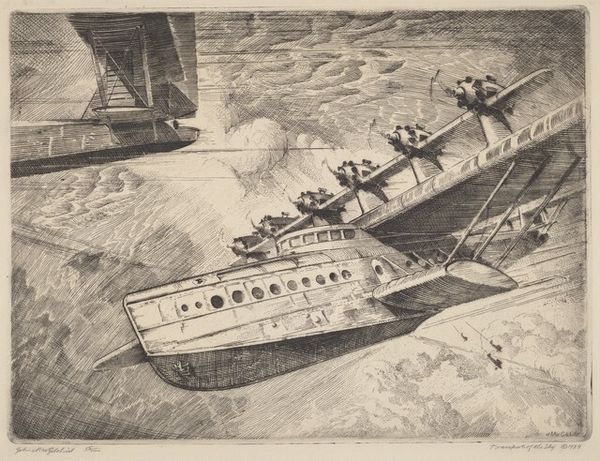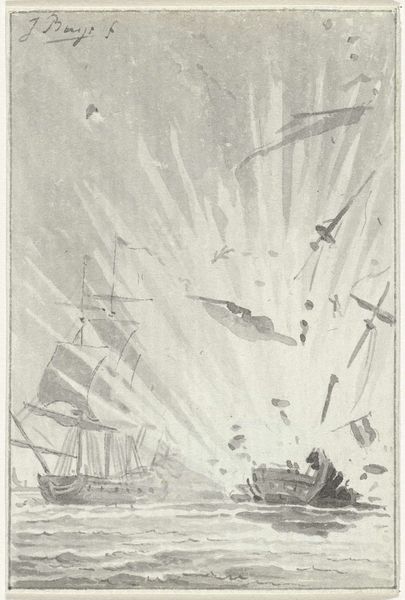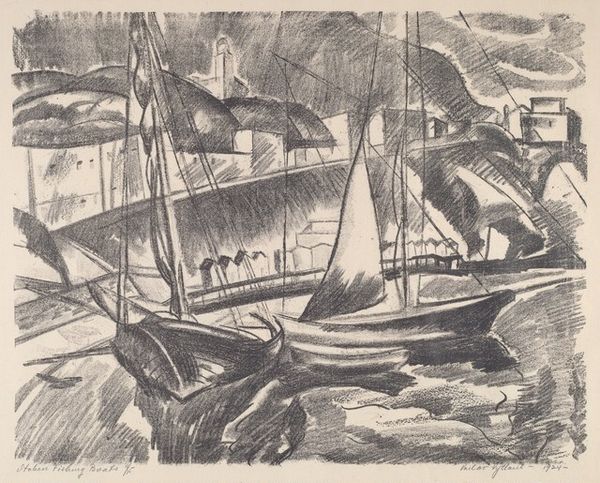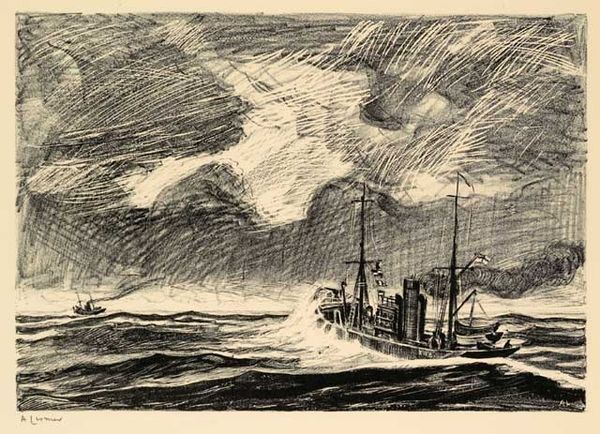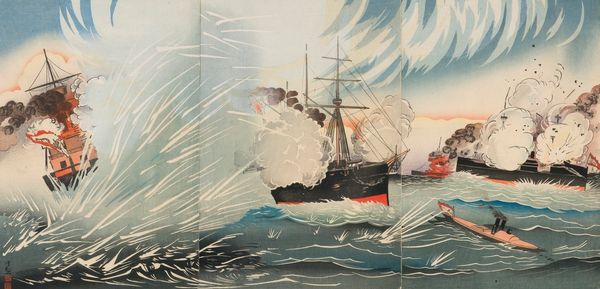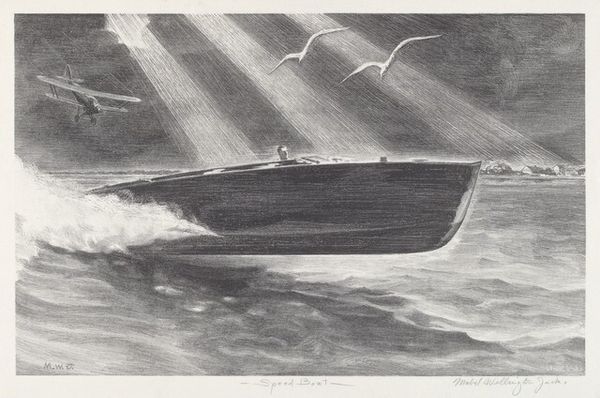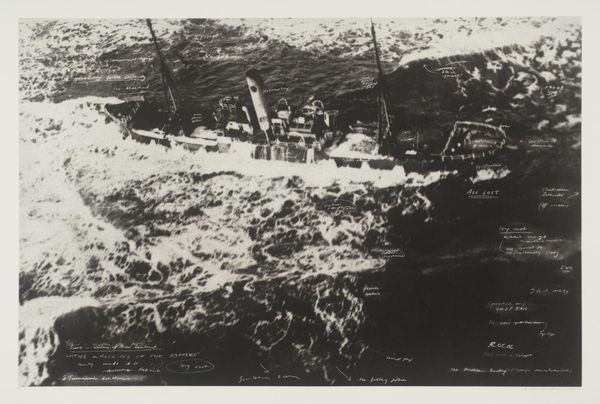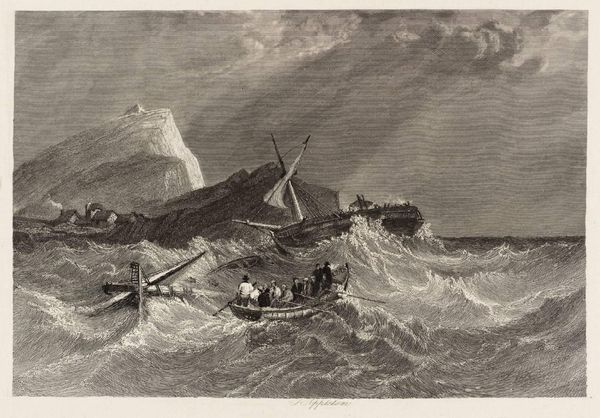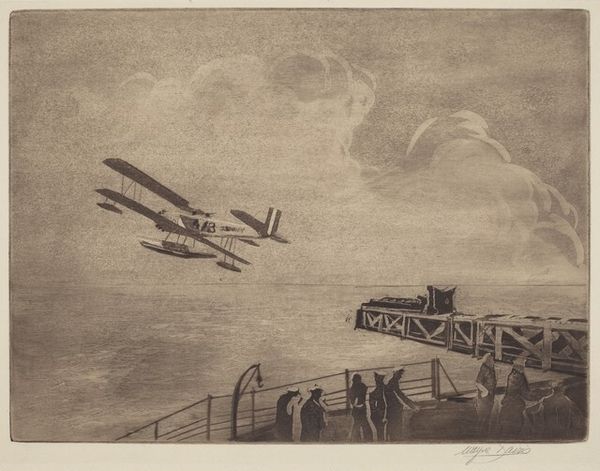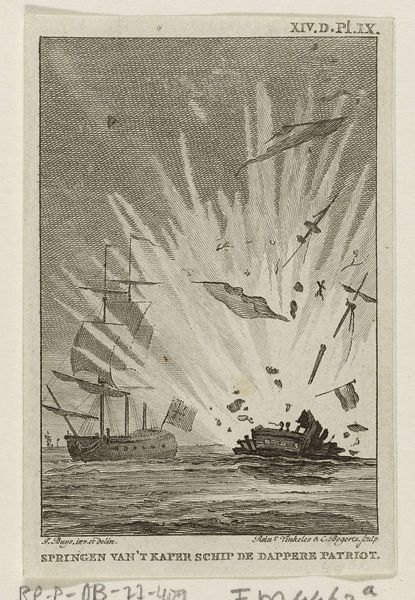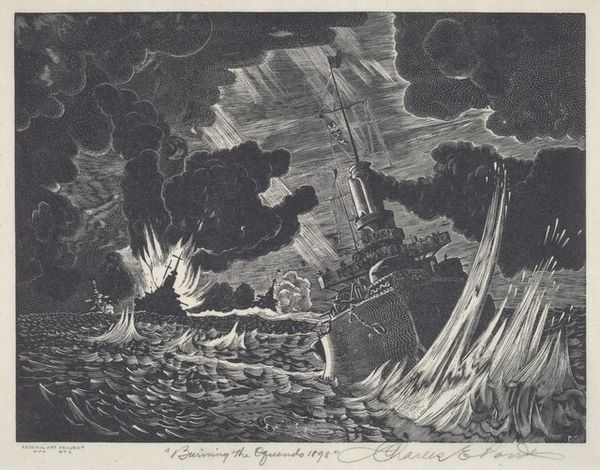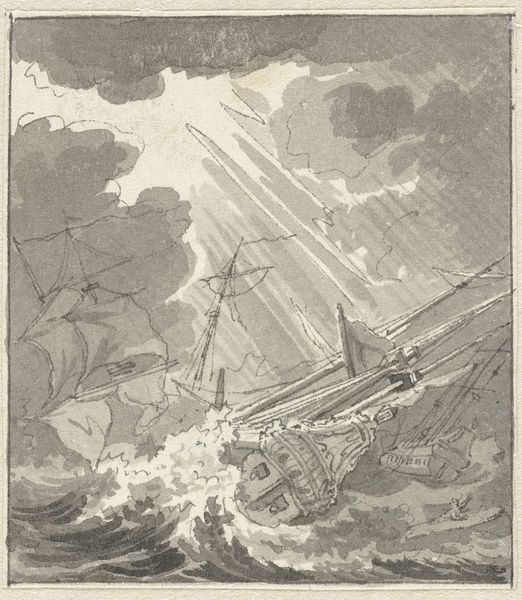
mixed-media, print
#
mixed-media
#
water colours
#
narrative-art
# print
#
cityscape
#
mixed medium
#
mixed media
Dimensions: Image: 358 x 460 mm Sheet: 438 x 535 mm
Copyright: National Gallery of Art: CC0 1.0
Editor: Here we have Ernest J. Hopf’s "Normandy Fire" from 1942, a mixed-media print that depicts exactly that, a massive ship ablaze, hoses spraying water. It has such a muted color palette, blues, grays… but the scene is anything but muted. What stands out to you in this piece? Curator: What strikes me immediately is the layering of labor. Consider the artist's process: mixed media, likely involving multiple printmaking techniques. This itself is a layered act of production. Then look at the subject, a scene of intense industrial effort – firefighting – aimed at a vessel built through immense labor and resources. Editor: So, it's not just *what* it shows, but how the materials tell a story? Curator: Precisely. This isn't just about depicting a dramatic scene. The deliberate choice of printmaking – a process inherently linked to mass production – speaks to the monumental scale of wartime industry. Watercolours provide almost a news-reel feel in a fine art space. Consider the etymology of the ship 'Normandy'; it would be interesting to learn about what print runs were done of this media. Were they given to those in military industrial complex. Who had access to this media and to what end? How does consumption of an image reflect social messaging and control of knowledge. Editor: I hadn’t considered the labor involved in even creating the art! The method echoes the theme itself. Curator: Exactly. By using printmaking, Hopf implicitly comments on the industrial effort sustaining and ravaged by war. Each print is a manufactured object depicting manufacturing and its violent consequences. We should further study these artefacts within the military-industrial complex, to understand its significance. Editor: I see it differently now, as a document of materials, production, and purpose all intertwined! Curator: The making reflects the meaning. Let’s continue to analyze how the consumption of such pieces influence material history.
Comments
No comments
Be the first to comment and join the conversation on the ultimate creative platform.
